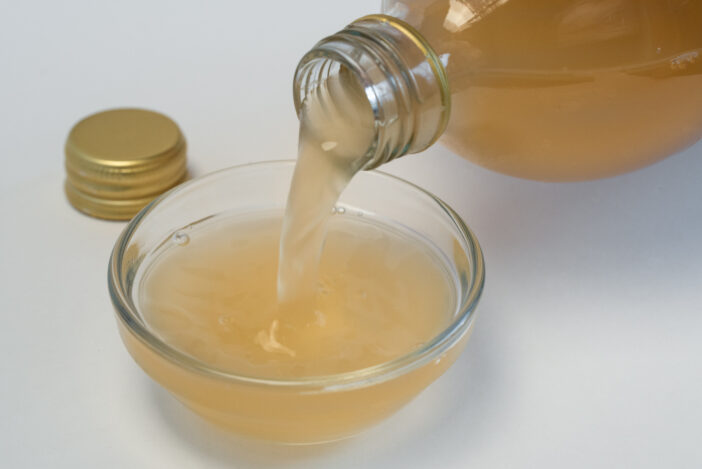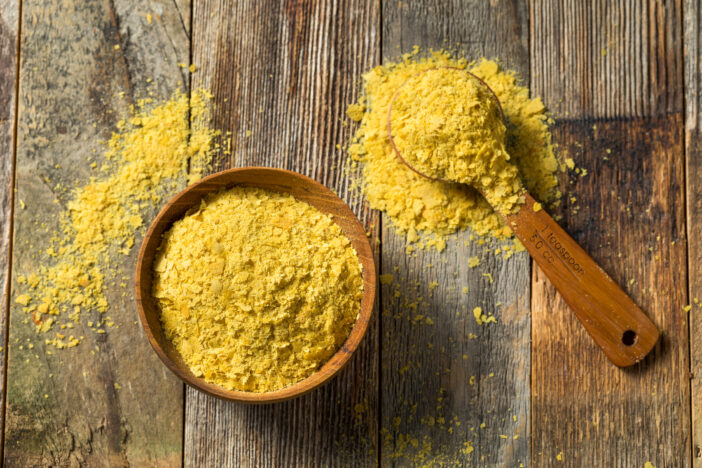10 Salt Substitutes to Boost Flavor and Cut Sodium
Salt substitutes offer flavorful options to reduce sodium intake without sacrificing taste. From herbs and citrus zest to vinegar and seaweed, these alternatives enhance dishes while promoting health.

Reducing sodium intake without sacrificing flavor can be a culinary challenge. Fortunately, there are a variety of salt substitutes that can add full flavor and finesse to your dishes, keeping them both delicious and healthier.
Disclosure: As an Amazon Associate, this site earns from qualifying purchases. Thank you!
1. Unveiling Salt Substitutes

Salt substitutes are diverse ingredients used to mimic the taste of salt or enhance the flavors of food without increasing sodium content. These alternatives cater to health-conscious individuals and those with dietary restrictions, offering a way to enjoy savory dishes while managing sodium intake.
Salt substitutes come in many forms, from natural herbs and spices to engineered compounds like potassium chloride. Each substitute offers a unique flavor profile and health benefits, making it essential to understand how to use them effectively in your cooking to achieve the desired taste and nutritional balance.
2. Herbal Havens: Spice It Up

Herbs are a fantastic way to infuse your dishes with layers of flavor without adding any salt. Whether you use them fresh or dried, herbs like basil, oregano, rosemary, and thyme can transform a bland meal into a fragrant and tasty experience.
Each herb has its distinct flavor, so experimenting with different combinations can lead to exciting new tastes. Creating herb mixes that complement the main ingredients of your dish can easily elevate its flavor profile without the need for salt.
3. Citrus Zest: A Tangy Twist

Citrus zest is the colorful outer layer of citrus fruit peels, which is rich in oils and packed with a punch of tangy flavor. Grating the zest of lemons, limes, oranges, or grapefruits into your dishes can add a bright and fresh dimension that salt cannot provide.
Not only does citrus zest add a zing to your meals, but it also contributes a healthy dose of vitamin C and other antioxidants. It’s perfect for finishing off seafood, salads, and even baked goods, leaving a refreshing aftertaste that enhances the overall flavor.
4. Vinegar Varieties: Sour Power

Vinegar offers a sour kick that can sharpen and define flavors in food, much like salt does. From the rich balsamic to the crisp apple cider variety, each type of vinegar brings its unique flavor and acidity to the table.
Incorporating vinegar into marinades, dressings, or even as a splash in soups can brighten dishes and add complexity. The key is to match the vinegar’s characteristics with the other ingredients to create a harmonious balance.
5. Nutritional Yeast: Cheesy Charm

Nutritional yeast is a deactivated yeast that comes in the form of yellow flakes or powder. It’s often used in vegan cooking to replicate the savory, cheesy flavor that cheese provides, without the added salt or dairy.
With its nutty and cheesy taste, nutritional yeast is versatile and can be sprinkled over popcorn, added to sauces, or used as a seasoning for roasted vegetables. It’s also a source of protein and vitamins, particularly B-complex vitamins, making it a nutritious addition to any meal.
6. Potassium Chloride: Salt’s Kin

Potassium chloride is a mineral compound that tastes similar to sodium chloride, or table salt, but with a key difference: it contains potassium instead of sodium. This makes it an ideal substitute for those looking to reduce sodium intake for health reasons.
It’s important to note that potassium chloride has a slightly bitter aftertaste, which some may find off-putting. However, when used in the right amounts, it can be a suitable alternative for salt in many recipes, especially for those who need to watch their blood pressure.
7. Seaweed Secrets: Ocean Essence

Seaweed is a treasure trove of umami flavor, the so-called fifth taste that is savory and deeply satisfying. Available in various forms such as nori, kelp, and dulse, seaweed can be used as a salt substitute that also offers the benefit of iodine and other minerals.
Seaweed can be ground into a powder and used as a seasoning, or it can be incorporated into dishes as flakes or sheets. Its oceanic essence is particularly well-suited for seasoning fish, stews, and soups, providing a flavor boost without the need for added salt.
8. Garlic Granules: Pungent Punch

Garlic granules offer a concentrated burst of flavor that can take the place of salt in many recipes. They are made from dehydrated garlic and can be used in their granulated form or ground into a powder for a more intense flavor.
The advantage of using garlic granules is that they have a longer shelf life than fresh garlic and can be conveniently added to dishes without the need for peeling and chopping. They’re perfect for incorporating into rubs, marinades, and seasonings for meats, vegetables, and sauces.
9. Infused Oils: Flavorful Fats
Infused oils are oils that have been flavored with herbs, spices, or other aromatic ingredients. They can provide a subtle yet distinct taste to dishes, offering a way to impart flavor without adding salt.
Whether you choose to use oils infused with rosemary, chili, garlic, or lemon, they can be drizzled over finished dishes or used in the cooking process. Infused oils add a layer of complexity to salads, pasta, and bread dips, making them a versatile tool in your flavor arsenal.
10. DIY Blends: Custom Creations
Creating your DIY blends allows for complete control over the flavor and sodium content of your seasonings. By mixing your favorite herbs, spices, and other salt-free ingredients, you can tailor your blends to suit any cuisine or personal taste preference.
Homemade blends can be made in batches and stored for future use, making it easy to have a go-to seasoning on hand. Experiment with different ratios and ingredients to find the perfect combination that enhances your meals without relying on salt.
Exploring the world of salt substitutes can open up a new realm of flavors for your culinary creations. With these alternatives, you can achieve a delicious balance in your meals while maintaining a healthier lifestyle and keeping your taste buds delighted.
In the video, The Domestic Geek explains –
The Domestic Geek
- Making your spice blends allows you to control exactly what goes into them and avoid preservatives or artificial ingredients.
- A paper towel funnel is an easy way to make the blends without making a mess on your counter.
- The Italian blend contains basil, oregano, rosemary, marjoram, thyme, garlic powder, and parsley in equal parts.
- The Cajun blend starts with salt, paprika, garlic powder, onion powder, oregano, and thyme before customizing the heat level.
- The taco seasoning mainly relies on chili powder, cumin, onion powder, garlic powder, paprika, oregano, salt, and cayenne pepper.
- The Greek seasoning has the most ingredients, including oregano, basil, thyme, rosemary, dill, parsley, garlic powder, onion powder, salt, pepper, marjoram, cinnamon, and nutmeg.
- You can make big batches of each blend and they’ll last for months stored properly.
- The blends can be kept coarse or made into finer grinds using a coffee grinder.
- The homemade blends have a wide variety of uses for seasoning different proteins, vegetables, grains, etc.






